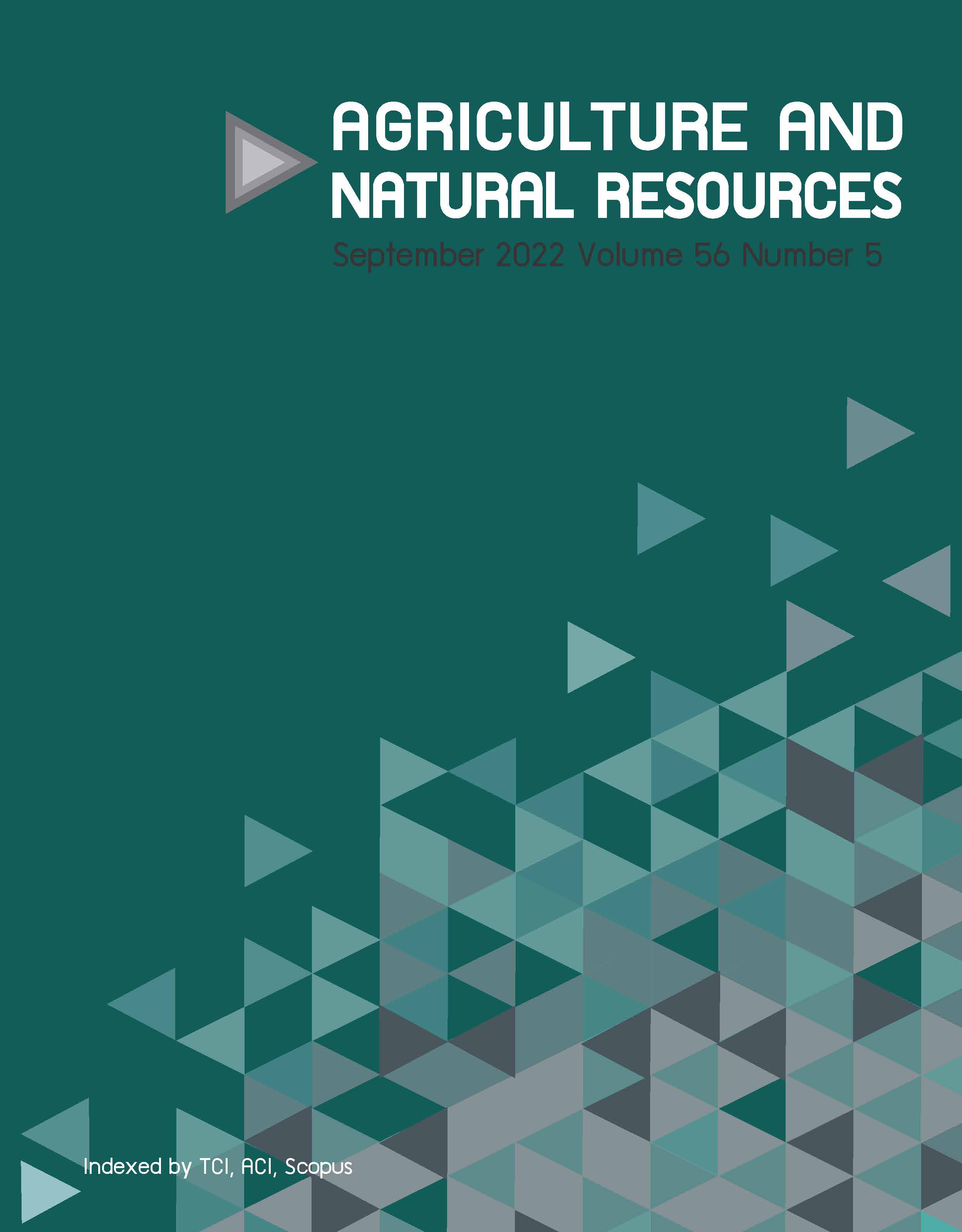Modeling land-use changes using logistic regression in Western Highlands of Vietnam: A case study of Lam Dong province
Keywords:
GIS, Lam Dong province, Land use changes, Logistic regression, Remote sensingAbstract
Importance of the work: Land-use changes substantially affect global environmental changes, namely greenhouse gases emissions, loss of biodiversity and soil resources.
Objectives: To model land use changes in Lam Dong province, Vietnam using the logistic regression approach with a geographic information system (GIS).
Materials & Methods: Remote sensing images were used to develop land use maps to analyze the trends in land use type changes in 2010, 2015 and 2020. A GIS was used to conduct spatial analysis of land use. Logistic regression was used to generate a probability surface of land-use changes based on the land use map and six driving factor maps (distance to primary roads, distance to secondary roads, distance to water source, distance to residential area, elevation and slope). The model was verified and validated by comparing the simulation and actual maps in 2020 based on Kappa index statistics. Then, land use prediction maps in 2025 and 2030 were generated using the MOLUSCE and QGIS software packages.
Results: Six land-use types were retrieved for analysis of spatial and temporal variation of land use: arable land, permanent cropland, forest, built-up land, water bodies and bare land. The results of the remote sensing image classification based on the supervised classification method had an overall accuracy from 90% to over 96% and a Kappa coefficient from 0.87 to 0.95. The results of the forecast model were evaluated by comparing the current status map and the simulation map in 2020, with the overall accuracy being 83.76% and the Kappa coefficient at 0.74 being considered as good.
Main finding: The investigation indicated an expected rapid change in land use/land cover (LULC) for the near future. The forecast results showed that the forest area in Lam Dong province will be substantially decreased due to transition trends from forest land to agricultural production land and residential land.
Downloads
Published
How to Cite
Issue
Section
License
Copyright (c) 2022 Kasetsart Universityonline 2452-316X print 2468-1458/Copyright © 2022. This is an open access article under the CC BY-NC-ND license (http://creativecommons.org/licenses/by-nc-nd/4.0/),
production and hosting by Kasetsart University of Research and Development Institute on behalf of Kasetsart University.







